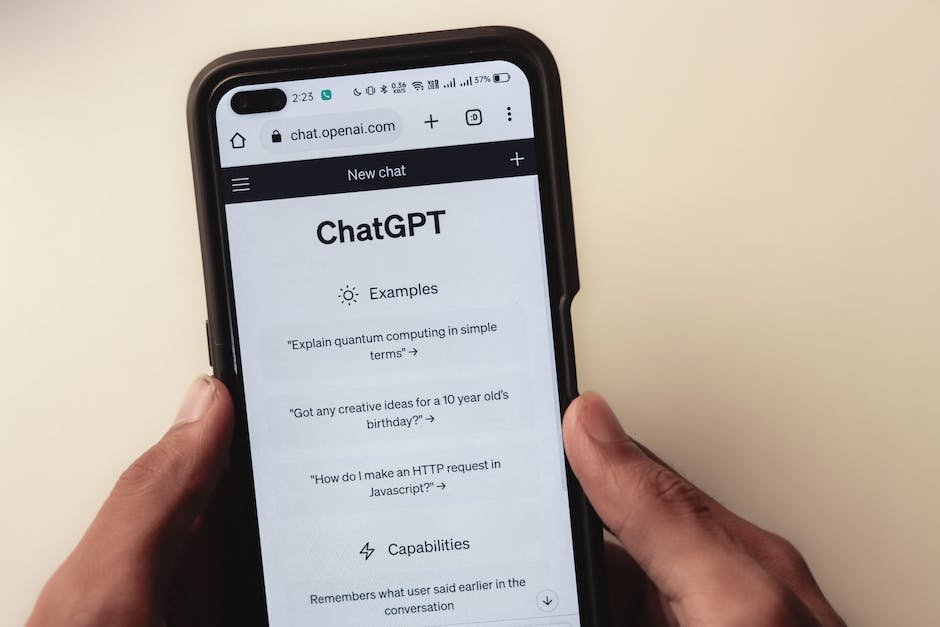The realm of artificial intelligence is evolving at a rapid pace, with the inception of powerful models like GPT-4 altering the scenario dramatically. The recent advancements in transformer-based models have reached a significant zenith with GPT-4, providing nuanced machine learning capabilities with enormous potential. Taking a deep dive into this transformative technology, we begin with an exploration of the core mechanics that drive GPT-4, progressing to assess its performance in terms of machine learning predictions. We also delve into its powerful text generation and manipulation capabilities, with a specific focus on its multilingual and translation proficiencies. Through this journey, we aim to provide a comprehensive view of the cutting-edge functionality provided by GPT-4, and thereby broaden our understanding of the revolution that this technology is bringing about in multiple fields of application.
Understanding the Fundamentals of GPT-4
GPT-4, the fourth iteration of OpenAI’s powerful language model, has generated quite a buzz in the tech world. With its predecessors already making waves, GPT-4 promises to take things to a whole new level. But what lies beneath this advanced model? How does it work? To understand GPT-4, one must dive into a broad range of underlying technologies and concepts.
-
Machine Learning (ML)
The backbone of GPT-4 is something we call Machine Learning. This technology allows computers to learn directly from examples, data, and experience. It’s like when you play a new video game – the more you play, the better you get. Machine learning lets computers improve their performance over time, just like you with your game.
-
Artificial Neural Networks (ANNs)
ANN’s are key to how GPT-4 understands and generates human-like text. You can think of ANNs as the brain of the AI. They’re designed to mimic our human brain – with nodes acting like neurons. ANNs can learn from experience, recognize patterns, and make decisions in a human-like way.
-
Natural Language Processing (NLP)
GPT-4’s proficiency in understanding and creating human-like text relies heavily on NLP. This technology helps computers understand, interpret, and generate human language in a value-adding way. What you’re reading now could have been created by a language model like GPT-4!
-
Deep Learning
Deep learning techniques are used to train GPT-4. The models are fed large amounts of data and are taught to recognize patterns. The “deep” in deep learning reflects the many layers of simulated neurons that process the data.
-
Transfer Learning
Think about when you learn something new, and you use that knowledge in a different situation. That’s transfer learning. GPT-4 uses former learning when generating new text.
-
Transformer Models
GPT-4 specifically uses “transformer” models, an architecture that uses something called “attention” mechanisms. It’s how the model decides what to focus on when it’s processing text.
-
Autoregressive Language Models
GPT-4 is an autoregressive model. That means it generates a piece of text by predicting one word at a time. It’s looking at all of the words already created and then predicting the next one.
GPT-4 promises unprecedented advancements in interfacing with digital systems, language translation, content creation, and more. The future of AI is here–and technologies like GPT-4 push the boundary of what’s possible every day. Remember these key elements: machine learning, artificial neural networks, NLP, deep learning, transfer learning, transformer models, and autoregressive language models, and you’ll have a base understanding of the foundational technology powering GPT-4.

Dissecting GPT-4’s Machine Learning Capabilities
Machine Learning in GPT-4: A Deeper Dive into Learning and Predicting User Input
Enter GPT-4. As a reputable successor to GPT-3—one of the most intricately designed language prediction models—GPT-4 stands tall with improvements that resonate with the ever-evolving tech landscape. GPT-4 typifies a paradigm shift, a genuine testament to the power of machine learning techniques.
In creating GPT-4, OpenAI employed Reinforcement Learning from Human Feedback (RLHF), a strategy that reimagines reinforcement learning. Instead of traditional reinforcement learning where a model interacts with its environment directly, here, the model interacts with a pre-recorded dataset. So what was GPT-4’s playground for this progression? A large dataset collected from human-AI interactions.
But what makes GPT-4 unique in learning and predicting user input? Rather than just learning from general inputs, GPT-4 focuses on getting the most from human feedback. By learning from outputs marked by users as helpful or unhelpful and by observing the actions that follow a user’s dissatisfaction, GPT-4 mold its responses to cater better to the user’s needs. This approach makes GPT-4 not just a language model, but a human-aided learning system.
Diving deeper, GPT-4 integrates the lessons from ‘Reward Models’ in reinforcement learning, which weighs different actions based on their outcomes. GPT-4 takes it up a notch by using a reward model trained on comparisons of multiple model-generated responses. It pits possible responses against each other, determining which provides the greatest reward, or in this case, user satisfaction.
Moreover, making GPT-4 stand out is its proclivity for “few-shot learning”. Instead of requiring substantial fine-tuning for each new task, GPT-4 can generalise from just a few examples, a crucial feature for a useful day-to-day AI tool.
However, the unique learning model has its downfalls, one of them being potential over-optimisation. The model might learn to take shortcuts to maximise reward, bypassing the intended learning process. To counter this, researchers are exploring advanced techniques, like ‘debiasing’, to keep GPT-4 on track.
So there you have it. From RLHF to few-shot learning, GPT-4 is truly a bright beacon in the world of artificial intelligence. Much like a student dedicating countless hours to mastering a subject, GPT-4 sharpens its language prediction abilities. Through this, it exemplifies how machine learning continues to redefine the extents of language prediction models. Akin to its predecessors, GPT-4’s uniqueness lies in its ability to learn—but it’s the way this beast of AI uniquely predicts and adapts that sets it apart. Let’s await the future chapters of this saga with bated breath, as GPT-4 and its successors continue to shape the sphere of Artificial Intelligence.

Text Generation and Manipulation
Increased Effectiveness of GPT-4 in Text Generation
GPT-4, the latest iteration in the GPT model lineage, surpasses its predecessors with the considerable boost in its capacity to generate and manipulate text. GPT-4 breaks the ceiling by effectively leveraging a massive dataset and processing capabilities. Its enriched text generation utilizes a unique design revolving around high-level abstractions of information, boosting the practical usability in real-world applications.
Deployment in Real-Life Applications
GPT-4’s text generation & manipulation tools showcase exemplary performance in various applications, fostering notable real-world implications. Expanding on the potential elucidated by previous models, GPT-4 possesses a heightened potential in industries such as content creation, customer service, and even in tech tools aimed at aiding developers.
For instance, in content creation, GPT-4’s advanced text manipulation can be employed to craft engaging content, tailored according to desired reader responses. This not only aids content creators but also serves as a boon to marketing professionals who can utilize this opportunity to maximize customer reach.
In the customer service industry, where addressing customer queries is crucial, GPT-4’s ability to accurately carry out interactive conversations stands out as a game-changer. This means that enterprises can rely on GPT-4-powered chatbots that are more emotionally intelligent and context-aware, enhancing the user experience considerably.
Skilful Integration of Data Sets
GPT-4’s ability to manage enormous datasets reflects its enhancement in terms of design, making it stand out among current machine learning models. GPT-4 does not merely consume and reproduce information. Rather, it digests and reconstitutes it, integrating it into a wider context, resulting in a superior understanding of user requests and honed predictive accuracy.
Handling Challenges: Over-optimization & Debiasing
Despite its advanced functionality, GPT-4 is not without its flaws. Over-optimization, debiasing, and other fine-tuning tasks present themselves as hurdles. Over-optimization leaves GPT-4 susceptible to generating incorrect or nonsensical content based on misunderstood patterns. To handle this, advanced techniques like debiasing have been incorporated into the model’s design. As AI development continues, mitigating these issues becomes a critical part of designing future models like GPT-4.
Future Trajectories of GPT-4 and its Successors
Poised to lead the AI revolution, GPT-4 and its forthcoming iterations will undoubtedly show significant improvements. Future versions will likely benefit from more extensive desensitization, optimized reinforcement learning, and ultimately, a more detailed comprehension of the world. It’s clear that GPT-4’s text generation and manipulation will lead generative models through a transformational phase, shaping the future of AI and its integration in our daily life.
In conclusion, GPT-4 emerges as an icon in text generation and manipulation. Its effectiveness stems from a unique dataset management, a knack for learning from human feedback, and advanced debiasing techniques. With potential improvements on the horizon, the future with GPT-4 promises to be a path filled with opportunities and advancements in the realm of Artificial Intelligence.

Translation and Multilingual Capabilities
Venturing into the versatile world of GPT-4, one cannot ignore the immense potential this transformative technology brings to the field of language translation and multilingual tasks. It offers a new paradigm of global conversation tools, bridging the communication divide with its superior capabilities. However, it’s crucial that the focus isn’t narrowed to the technology itself but the tremendous opportunities it opens up for global communication and multilingual discourse.
Imagine a scenario where people from different parts of the globe, each speaking their unique language, are able to interact seamlessly, uncloaked by the limitations imposed by language barriers. This thought-stream is given life with GPT-4’s sophisticated translation capabilities. Its proficiency in understanding and producing human-like text in multiple languages sets a new benchmark in AI-driven language translation.
GPT-4’s translation abilities can be credited to its underlying architecture, which comprises quadrillions of meticulously trained neural network connections. Embarking on an in-depth understanding session using complex pattern recognition techniques, it swiftly deciphers and translates text across various languages. It also embodies a robust error-correction mechanism that refines its output by consistently learning from mistakes.
A key feature of GPT-4 is its human-like flexibility. It doesn’t adhere strictly to the direct translation method, which can often result in awkward or unidiomatic phrases. Instead, it aims for the best possible interpretation, preserving the intention and tone of the original text while adjusting it to align with the grammatical and cultural nuances of the target language. This thoughtful translation process mimics the cognitive actions a human translator would take, enhancing the quality of the interactions.
But what does this mean for global communication? It’s simple – accessibility and inclusivity! GPT-4 can serve as a catalyst for breaking down language barriers between people, enabling nuanced discussions on a global scale. This accessibility has the potential to transform industries beyond translation services too, such as customer support, education, and international business relations – just to name a few.
Moreover, multilingual tasks aren’t limited to translation alone. GPT-4 also demonstrates proficiency in language detection, sentiment analysis on non-English texts, and generating multilingual content. These expansive capabilities can fuel global understanding, offering new perspectives and fostering richer cross-cultural exchanges.
Sounds revolutionary, doesn’t it? That’s because it is. GPT-4, with its superior understanding and production of human-like text in multiple languages, has laid a robust groundwork for the future. It’s poised to redefine the way we perceive AI-driven language models and their abilities to facilitate global communication.
Hold on, though. It’s pivotal to remember that all technologies come with limitations and GPT-4 is no exception. Its ability to accurately represent idiomatic phrases, proverbs, and nuanced cultural context is still a work in progress. That said, the framework for improvements is vast and present, painting a bright future for multilingual communication powered by GPT-4.
In conclusion, with GPT-4 at the forefront, we’re teetering at the edge of a new age in global communication. The key lies in harnessing its staggering potential while continuously refining its capabilities. Exciting times are certainly ahead in the realm of AI-driven language models!

Future Potential of GPT-4 and the Path Forward
As we cast our gaze forward, it’s crucial to consider the very factors that could transform GPT-4 into a game-changer. Sure, the discussed aspects have already proven GPT-4’s advanced capabilities. But as technology enthusiasts craving for AI’s zenith, imagine the unprecedented complexities the future iterations of this model could unlock!
On the journey towards more realistic and human-like AI interactions, user safety and the ethical use of the technology are paramount. Consequently, mitigation strategies are essential in addressing harmful outputs from GPT-4, alongside fine-tuning it to refuse generation of inappropriate content. Thus the architects of GPT-4 must commit to soliciting public input on the technology’s default behaviors, an aspect that transcends beyond merely hardware and software enhancements, knocking on the doors of data science ethics.
Speaking of unprecedented complexity, it’s imperative to envision how GPT-4 could help businesses scale up their operations. There lies a significant opportunity for GPT-4 to augment existing tools and applications. Imagine a world where intelligent analytics tools are powered by such an advanced language model that can generate reports, provide rich insights, and even predict future trends. What about content creators leveraging GPT-4 to draft scripts for videos, predict popular content trends, and even generate SEO-friendly blog content? With the right roadmaps, GPT-4 might be on a path to revolutionize various industries, solve complex problems, and inevitably, contribute to the global economy.
But what’s progress without challenging the boundaries of possibility? Expounding further on GPT-4’s advancements, consider it being infused with the ability to generate 3D objects or even interactive games from textual descriptions! As sensational as it sounds, if GPT-4 can master language, why not shapes, colours, motions, rules, and interactivity? This isn’t a far-fetched dream but a precursor to a radical tech evolution, stirring us towards an AI-driven future.
The goal, consequently, is to establish GPT-4, and its successors, as catalysts for innovation across sectors. The key is not merely teaching our machines to understand human languages but cultivating a harmony where they comprehend our emotions, culture, complexities, and even humor. It’s time for AI to leap from linear deductions to parallel introspections.
Surely, this rollercoaster ride of AI evolution might face significant challenges – from ethical dilemmas to creating a safe user experience and ensuring fair, unbiased outputs. But what’s a journey without a konundrum or two? And for tech enthusiasts like us, these challenges are more an opportunity than a barrier.
As we close the curtain on this dialogue, remember, the future isn’t just black or white, but painted in shades of GPTs, teeming with the potential of creating an equal, boundless, and empowered world. For a radical revolution like this, a strict timeline wouldn’t suffice. But keep your eyes peeled, and you’ll witness the world transforming, one GPT at a time. As for GPT-4’s next move? Only time, and a truckload of AI advancements, will reveal. Stay Tuned!

Peering into the future of GPT-4, we recognize the vast array of potential that remains untapped. given its robust current capabilities. Leveraging its machine learning prowess, we can envisage its transformative role in bridging communication barriers, automating mundane tasks and making data analysis intuitive and straightforward. The beauty of artificial intelligence, and more specifically GPT-4, lies in its potential to constantly evolve and adapt. This not only fosters productivity but also aids in the democratization of advanced technology, making it more accessible and beneficial for all. As we continue to advance in our explorations of GPT-4, let us also be reminded of the sense of responsibility that comes with the implementation of such powerful technology, ensuring that in our quest for progress, we do not lose sight of the importance of using it ethically and responsibly.




